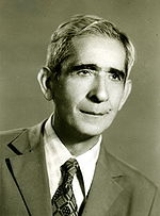
Martiros Kavoukjian
Encyclopedia
Armenia, Subartu And Sumer
is inspired by the Armenian hypothesis
of Indo-European origins
. It seeks to establish an ethnic Armenian
identity for the Armani mentioned by Naram-Sin
, for "Armani-Subari
connections" and "Armani-Subari-Sumer
relations". The English translation was published privately with the support of the Malkhassian Foundation, Montreal.
is inspired by the Armenian hypothesis
Armenian hypothesis
The Armenian hypothesis of the Proto-Indo-European Urheimat, based on the Glottalic theory suggests that the Proto-Indo-European language was spoken during the 4th millennium BC in the Armenian Highland or Aryan Highland. It is an Indo-Hittite model and does not include the Anatolian languages in...
of Indo-European origins
Proto-Indo-Europeans
The Proto-Indo-Europeans were the speakers of the Proto-Indo-European language , a reconstructed prehistoric language of Eurasia.Knowledge of them comes chiefly from the linguistic reconstruction, along with material evidence from archaeology and archaeogenetics...
. It seeks to establish an ethnic Armenian
Armenians
Armenian people or Armenians are a nation and ethnic group native to the Armenian Highland.The largest concentration is in Armenia having a nearly-homogeneous population with 97.9% or 3,145,354 being ethnic Armenian....
identity for the Armani mentioned by Naram-Sin
Naram-Sin
Naram-Sin , reigned ca. 2254–2218 BCE, short chronology, was the third successor and grandson of King Sargon of Akkad. Under Naram-Sin the Akkadian Empire reached its zenith...
, for "Armani-Subari
Subartu
The land of Subartu or Subar is mentioned in Bronze Age literature...
connections" and "Armani-Subari-Sumer
Sumer
Sumer was a civilization and historical region in southern Mesopotamia, modern Iraq during the Chalcolithic and Early Bronze Age....
relations". The English translation was published privately with the support of the Malkhassian Foundation, Montreal.
Works
- The Genesis of Armenian People, Montreal, 1982.
- Armenia, Subartu and Sumer, Montreal, 1989 ISBN 0-921885-00-8
- The origin of the names and Armen Aye, and Urartu, in the subway.) Beirut, 1973

